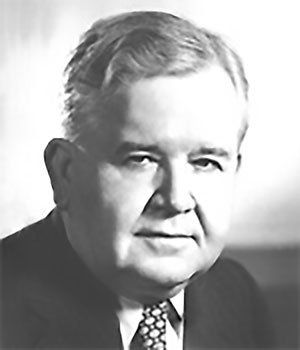
Everette Lee DeGolyer, Sr.
Everette Lee DeGolyer Sr., known as “the father of American geophysics”, was born in a sod house near Greensburg, Kansas, on October 9, 1886. In 1909, the Mexican Eagle Oil Company (El Águila) hired DeGolyer, who had not completed university, to head its exploration staff, and the next year he located the Potrero del Llano No. 4 well in the Mexican Golden Lane, one of the world’s largest fields, which produced more than 110,000 barrels a day.
He received his B.A. from the University of Oklahoma in 1911. After another stint in Mexico, during which he located the second big Mexican field, Las Naranjas, he returned by 1914 to Oklahoma to run his own consulting office.
Degolyer organized the Amerada Petroleum Corporation for exploration in the United States and Canada and the Rycade Oil Company for exploration of salt-dome lands bordering the Gulf of Mexico. In 1922, he instigated a torsion balance survey at the “Spindletop” oilfield, the first geophysical survey of an oilfield in the United States, and at Nash, Texas, in 1924, located what became the first oilfield discovered by geophysical methods.
In May 1925, DeGolyer organized a subsidiary of Amerada, the Geophysical Research Corporation, which located a record eleven Gulf Coast salt domes in nine crew months and perfected a reflection seismograph that has become the principal tool for geophysical oil exploration worldwide. This technology inaugurated the modern age of oil exploration with the 1930 discovery of the Edwards oilfield in Oklahoma by reflection survey.

1414 Enclave Parkway
Houston, TX 77077
Tel: 713-840-1753
Fax: 713-222-1885
Email:
info@energyeducation.org



